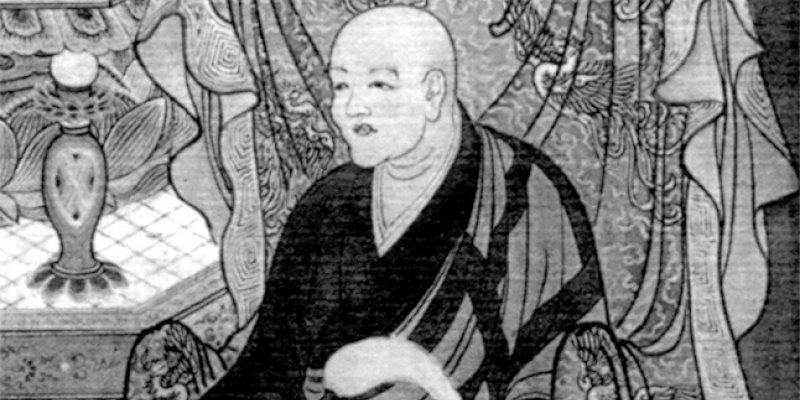Zen in Japan

Buddhism was introduced in Japan in about the 5th century. Different schools of Korean or Chinese origin rapidly sprang up and developed alongside the existing religion of Shinto ( the ‘way of the gods.’)
Around the 13th century, Japanese Buddhism, which had become wealthy, was completely overhauled by several notable reformers. One of them, Master Dogen (1200-1253) implanted the Soto ( Caodong in Chinese) branch of Zen Buddhism in the country. (Chan) The Way that he had received from his master Nyojo ( Rujing in Chinese) was centred on shikantaza, simply sitting, zen practised under the direction of a master and understood not as a process of gradually liberating oneself from illusion , but as immediate and universal access to the awakening of the Buddha and the patriarchs.
Master Dogen is considered as one of the deepest and most original thinkers that Japan has ever known. His main work, the Shobogenzo, ( The Treasure of the Eye of the True Law) brings together 95 fascicules written at different times of his life , for different audiences. His awakening also expressed itself in the rules that he designed for his monastic community ( Eihei Shingi, the pure rule of the temple of eternal peace.)
One of his major inovations was to propose the same precepts for lay persons, monks and nuns and to collect them into 16 ( instead of 350 for nuns, 250 for monks and 48 for laity) Besides his teaching role, he founded two temples, of which one, Eihei-ji, the Temple of Eternal Peace, is today one of the principal Soto Zen temples in Japan.
If Master Dogen is considered the ‘father’ of the Soto school, Master Keizan (1264- 1325). Is its ‘mother.’ The Soto school holds up Master Keizan as the one who made the teachings of Master Dogen shine out and spread in Japan and assured the perpetuity of his school in that country. HIs major work, the Denkoroku, the Gathering of the transmission of Light, established his place amongst the masters of Soto Zen, placing Master Dogen as the 51st. Successor of Buddha Shakyamuni.
Apart from this, Master Keizan played a major role in the establishment of the rituals of the school, a work which would have deep and multiple effects. In installing a liturgical calendar, he established in a concrete way the “continuous practice” of Master Dogen and the cyclical movement of the universe ( the flow of days, months and years) In developing or introducing the rituals that didn’t only concern the monastic community, he encouraged monks and the rest of society to come together. In this way, it is still the case today that the most contact between the Japanese population and Zen is through funeral ceremonies.
Master Keizan founded several temples, and amongst them Shoji-ji is the second largest Soto Zen temple in Japan. He had many disciples, some of whom were great ones.
It was thanks to this double heritage, that Soto Zen was largely developed ,touching all levels of the Japanese population. These days it has 15,000 temples in Japan and 30,000 monks and nuns. These have the right to marry and have a family. Many of them, after training, leave the monastery to serve in a more modest temple. A certain number teach Buddhism and help the laity to practise zazen.
